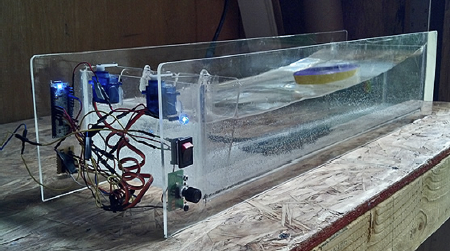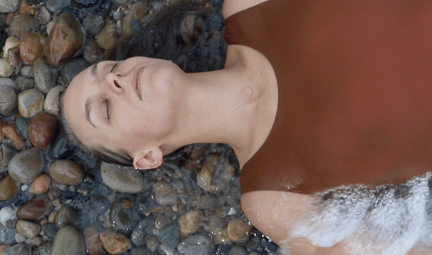

A Wind from Noplace
Kristina Sheufelt, Penny W. Stamps School of Art & Design
Collaborator: Ashwin Kumar, College of Engineering
A Wind From Noplace, consists of two kinetic landscape sculptures, animated by programmable mechanical elements which respond to numerical datasets. These datasets will be collected using equipment purchased with funds from a Smucker-Wagstaff grant.
This summer, I began using a portable biosensing kit to record my body’s responses to interactions with different landscapes. This kit includes an electroencephalogram (EEG), a headset device used to monitor electrical activity in the brain, and a pulse monitor, which records heart rate data. I plan to create kinetic landscape sculptures representative of these data sets. I consider these works physical, creative analyses of bodily output. Each sculpture will serve as a tool for translating personal, place-specific ecological events into a gallery experience.
With the help of my collaborator Ashwin Kumar, an undergraduate studying Computer Science, I will use this data to animate the described sculptures. For example, brain activity during an interaction with tall grass will be channeled through a microcomputer into a series of programmable servo motors, each controlling a blade of grass to create an artificial meadow. The data will instruct the servos’ movements, thereby making the windless swaying of the ‘meadow’ a reflection of my brain’s reaction to the original experience. I am an installation artist with excellent fabrication skills, but I lack the programming ability needed to translate the scientific component of this project into a gallery experience. With the help of ArtsEngine’s Find A Collaborator tool, I was able to connect with Ashwin, whose technical knowledge combined with an artistic streak makes him the perfect working partner for this project. Though Ashwin is my only official collaborator, I have also consulted with LSA Digital Studies faculty member Yvette Granata and SEAS faculty Sara Adlerstein-Gonzalez.
To date, we have produced two prototypes and documented two field trials. By the end of January, I plan to have all data collected and all documentation complete. In February, Ashwin will work on programming while I begin fabricating the water-based sculpture, which will involve construction of an artificial lake or stream bed. When programming is complete, we will work together to assemble both sculptures. In early March, I will construct pedestal platforms for each sculpture. In the second week of March, we will install the sculptures and accompanying video works in the Stamps Gallery downtown, where I hope that viewers will leave with new, hopeful notions of ecological intimacy amid the myriad environmental crises of our era. So far, working with a collaborator has been both exciting and challenging. I am not always the best at communicating my ideas, but fortunately Ashwin and I think alike, and we have been able to communicate well about project goals and outcomes. I believe that this collaboration will continue to be mutually beneficial to its end, opening doors for the both of us for similar interdisciplinary action in the future.
